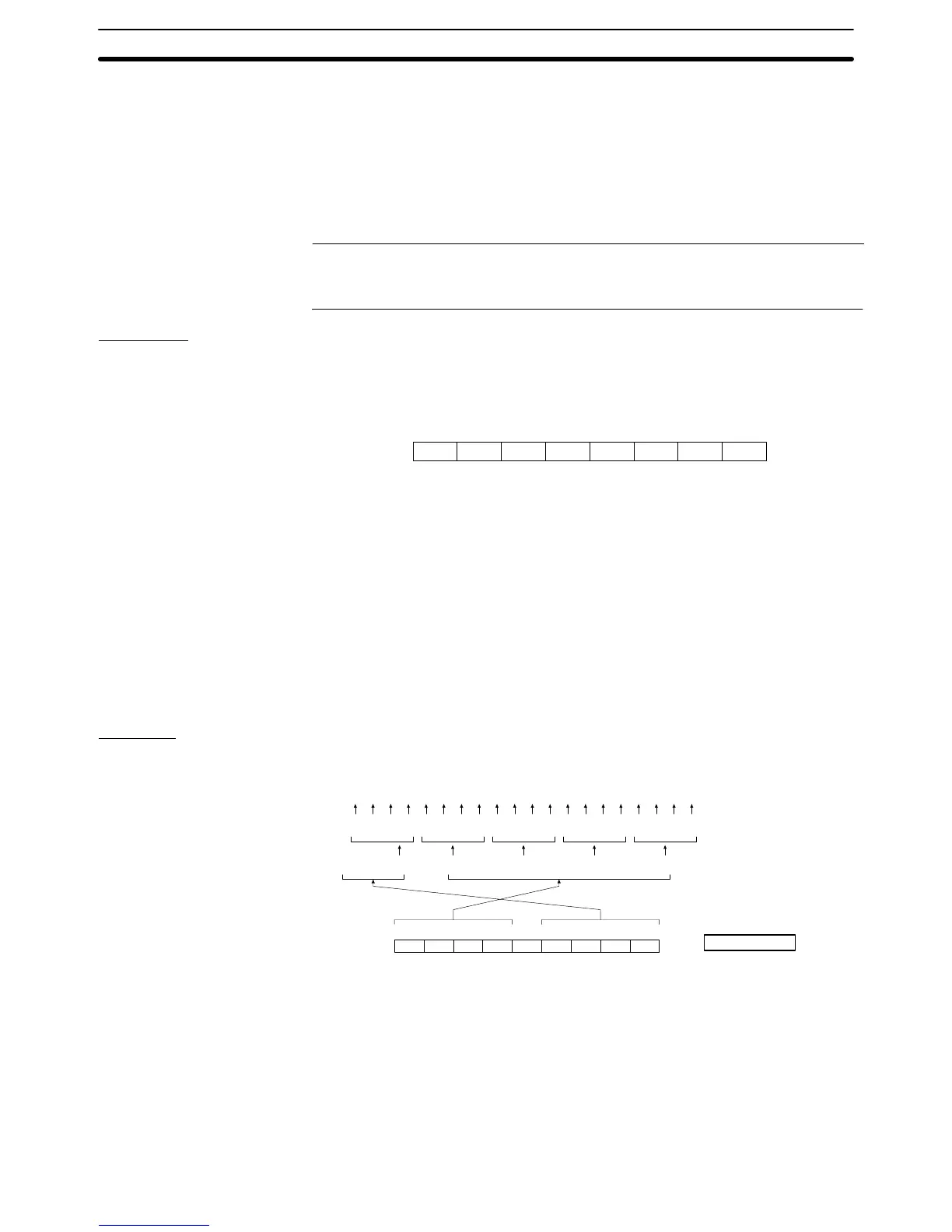4-3SectionCommands/Responses
385
specified as 4 hexadecimal digits value. (Table entries with
smaller number is the rightmost bit.)
If written data is less than 16, the specification is started from bit
0. (Remaining leftmost bit will be ignored.)
The bit memory table data (4 hexadecimal digits) is delimited by
commas by each 16 table entries.
s
1
, s
2
: Checksum (2 hexadecimal digits)
When m is 0 or 8, omit this setting.
Reference: The maximum number that can be specified for bit memory table entries de-
pends on the setting for numbers of bit memory table entries (256/1000) made at
the Support Tool.
Response
Only if Yes is set for the Response memory switch, the response indicated below
is returned on normal completion.
Format
1B 57
[ESC] [CR]W
3430 31 0D42
B
30
0 0 s1 s2
s
1
, s
2
: Checksum (2 hexadecimal digits)
This is always added (fixed as 14H)
Function
• Writes the data of the specified number of bit memory table entries, starting
from the specified bit memory table entry.
• A maximum of 100 table entries can be written at one time.
• If a number of table entries that is not a multiple of 16 is specified, 0 is inserted
in remaining bits (leftmost bits).
• The number (n) of 4 hexadecimal digits value to be specified is as follows:
n=(number of written bit memory table entries–1)\161
(\ indicates the subtraction of the integer.)
Example
Writing bit memory table entries 51 to 70
Contents to be written to bit
memory
Changing to Bit data
Changing to Hexadecimal
(Remaining left most bit 0)
Data to be specified
ASCII code
68 67 66 65 64 63 62 61 60 59 58 57 56 55 54 53 52 51
ON ON ON OFF ON ON OFF ON ON OFFOFF ON OFFOFFOFFOFF ON ON
111011011001000011
F B 6 4 3000
46
F
30
0
30
0
30
0
2C
,
33
3
34
4
36
6
42
B
70 69
ON ON
11
